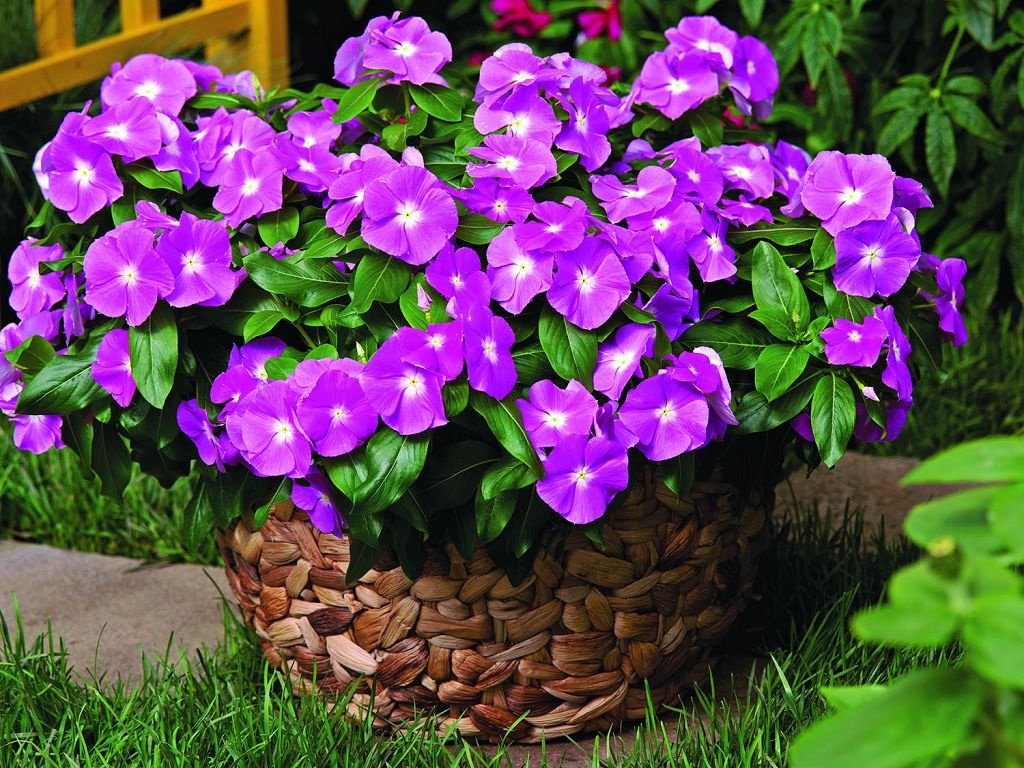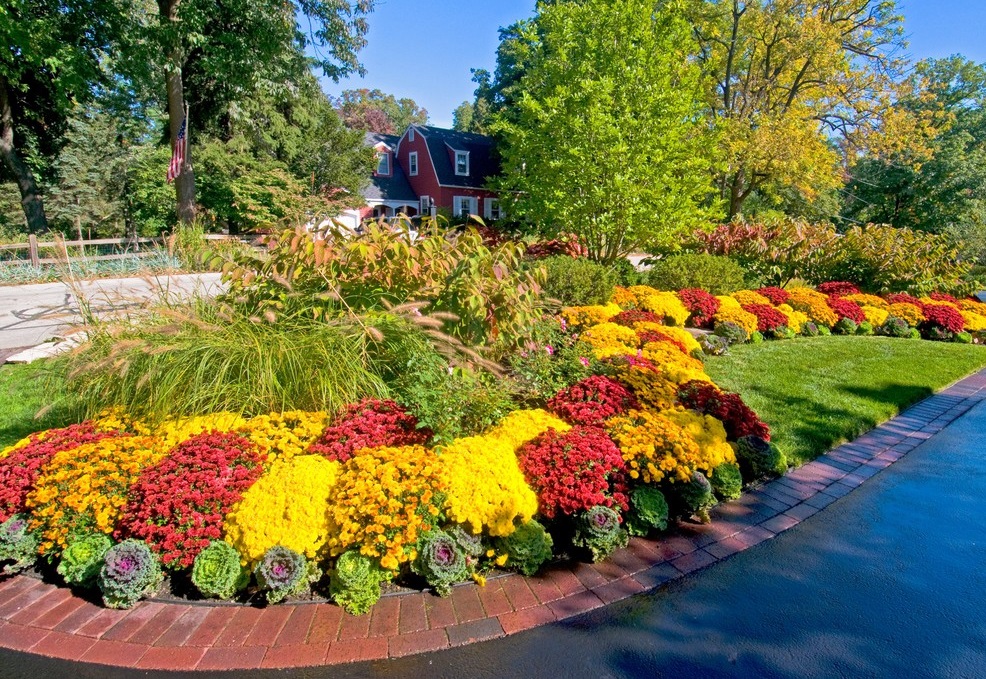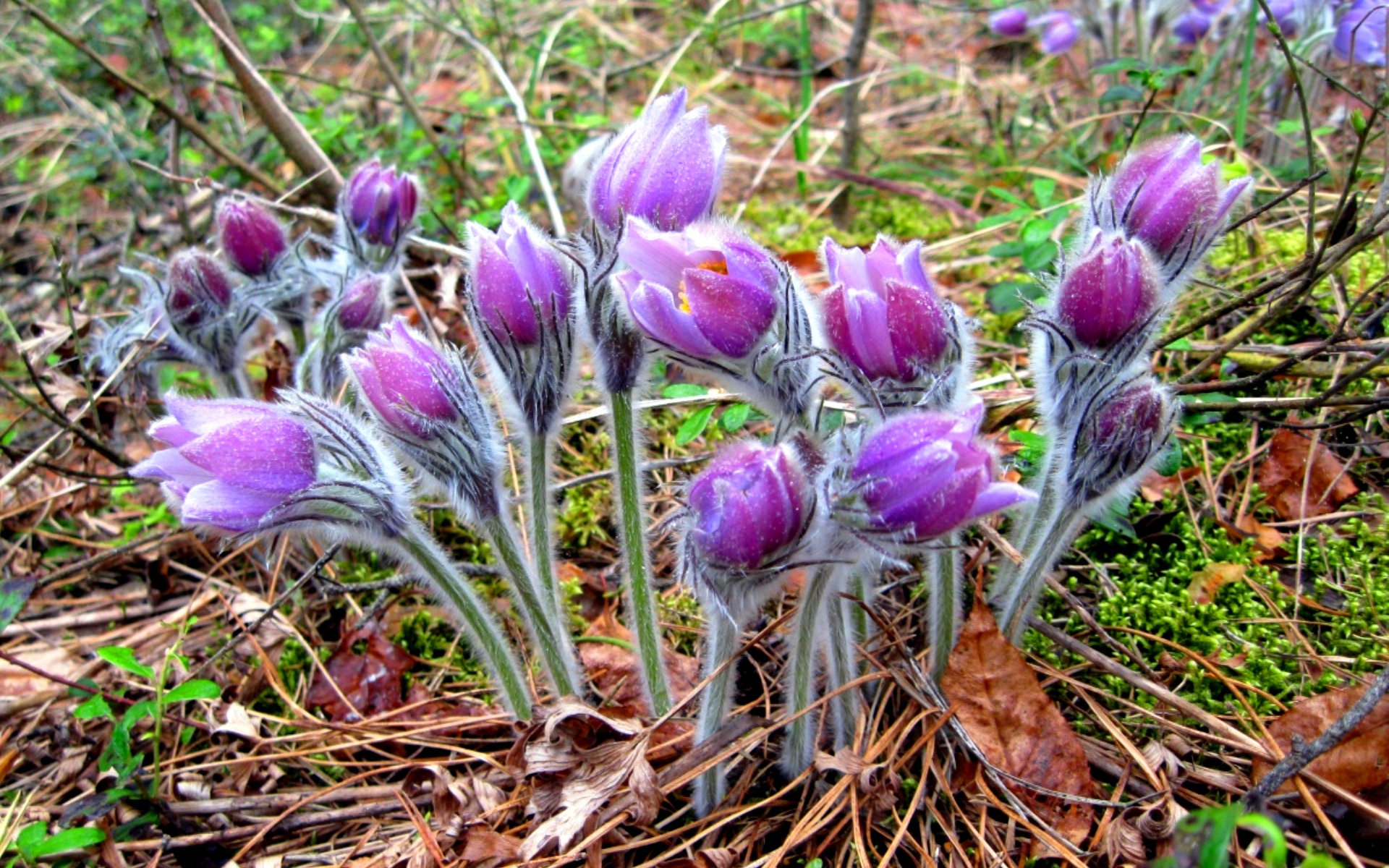In order for the personal plot to be decorated with a carpet of thick bright greenery, then for these purposes a plant such as periwinkle should be chosen. Thanks to this flower, the garden takes on a neat and well-groomed appearance. This perennial crop can grow both in a sunny area and in the shade. Already in early spring, young greenery begins to appear, when other plants are just awakening from hibernation.
The advantage of growing periwinkle in the garden, its types
The leaves have a glossy surface that shimmers in the sun... In April, the bushes begin to become covered with numerous flowers, and the combination of rich greenery and variegated color of petals turns any front garden into beautiful multi-colored flower beds.
Growing this plant in the garden has its advantages:
- due to the fact that the surface of the soil is covered with a living green carpet, the weeds are not able to break through it;
- the root system protects the soil well from moisture loss and erosion;
- leaves and stems of periwinkle act as an insulating cover on the soil, contributing to the retention of heat in winter and coolness in summer;
- the green cover of the plant is a living mulch, as a result of which, when dying off, the level of humus increases in the area.
In landscape design, mainly two types of perennials are used:
- Lesser periwinkle - is widespread in temperate climates, but can grow well in the northern regions. This variety tolerates frost well, sometimes it does not even need shelter in winter.
- Large periwinkle - is more thermophilic and is grown most often in the southern regions. It feels comfortable in mild climates where temperatures rarely drop below zero.
Planting periwinkle
This plant reproduces vegetative and seed method... Many varieties are grown from cuttings. Planting the plant is best done in early spring, but you can plant it both in late summer and late autumn, depending on the type of flower.
Special requirements are imposed on the composition of the soil where the periwinkle will be grown:
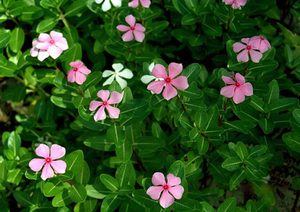 periwinkle large and small grows well in a neutral or slightly acidic environment;
periwinkle large and small grows well in a neutral or slightly acidic environment;- the quality of clay soil can be improved by laying peat, compost or rotted manure;
- mineral fertilizer can be applied to soil with a low nitrogen content;
- for planting and rooting of large and small periwinkle to be successful, it is recommended to fertilize the soil with fertilizer containing phosphorus.
All kinds of plants usually propagate by cuttings, because its stems spread along the surface of the earth and after a while begin to take root. After that, it is recommended to propagate such a shrub. It is best to do this in early spring or late autumn while the root system is dormant.
Before planting periwinkle in open ground, you need to decide on the area of the site where this plant will be grown. You should also choose the periwinkle variety that will be planted, since they differ in the growth rate of the stems and the development of the root system. The average distance between the bushes should be 10-15 cm.To prevent soil erosion, cuttings should be staggered.
Both the large and small periwinkle are quite unpretentious to sunlight, so you can choose any place for planting.
Caring for periwinkle
If periwinkle was chosen for growing in the garden, planting and care in the open field for this plant is usually carried out without problems, you just need follow basic rules.
Top dressing and watering
Periwinkle loves to be fed in a timely manner, because thanks to this, its flowers and leaves are able to show all their beauty. It is usually fed with organic and mineral fertilizers. The best option is to use compost, humus and leafy soil.
Flower care includes watering, but you should be aware that the periwinkle does not really need it, it usually has enough natural precipitation, even in small quantities. But still, sometimes it is worth watering it, and also washing off the dust from the leaves.
Weeding and pinching
This flower does not bother being around weeds, and it gets along well with them, but still, in order to enjoy the beauty of this plant, their should be weeded... To increase tillering, as well as for more abundant flowering, it is necessary to pinch both young and old shoots.
Diseases and pests
The plant can become infected with fungal diseases such as rust or powdery mildew, which must be dealt with with fungicides. In the case of powdery mildew, "Topsin", "Topaz", "Skor", "Quadris" and other similar preparations are used. And against rust, "Cuproxat" or Bordeaux liquid is best suited. Periwinkle can suffer from the attacks of aphids, which are fought with "Karbofos" or "Fufanon".
How can periwinkle be used?
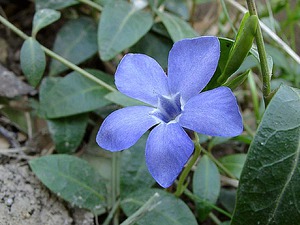 Very often this plant used as a medicine... There is even a pharmacy tincture of such a flower, which helps with some diseases.
Very often this plant used as a medicine... There is even a pharmacy tincture of such a flower, which helps with some diseases.
The medicinal properties of periwinkle help with the following diseases: migraine, stomach and intestinal diseases, hypertension, vascular spasms, etc. However, despite its medicinal characteristics, this flower is still decorative, with which houses and buildings in the country are decorated.
Thus, periwinkle is quite unpretentious plantthat even without regular maintenance can grow and blossom.
